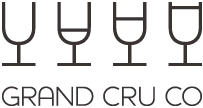Chianti Classico looks forward to Chinese year of the rooster
Tuscany’s Chianti Classico wines are known for their black rooster emblem that appears on the bottle neck, and the symbol is used widely by the regional wine council for marketing.
Chinese new year 2017 heralds an opportunity for Chianti Classico in China, as the lunar calendar moves into the year of the rooster from the monkey. ‘We know that 2017 is the year of the rooster in China and we will certainly try to take advantage of it,’ said Silvia Fiorentini, head of marketing for the Chianti Classico Consorzio.
The Consorzio is planning education seminars in China this year. ‘We know that “education” in this market is very important and the black rooster logo is really very helpful for us to help consumers identify our products,’ Fiorentini said
The rooster emblem has been associated with the Chianti area for around 700 hundred years, dating to a fabled horse race between two rival knights, one from Florence and one from Siena, according to the Consorzio.
Italian wines saw strong growth in shipments to China in 2016. Exports rose by 39% in value to US$114 million and by 14% in volume versus 2015, according to the latest Chinese customs figures released this week.
China is still a ‘secondary’ market for Chianti Classico at present, but Fiorentini said that she expects this will change. ‘We have good growth prospects for the future and for this reason we will keep on investing [there].’
Italian winemakers have been boosted by online retail giant Alibaba pushing their wines harder in 2016. Alibaba’s billionaire founder may own châteaux in France’s Bordeaux, but he chose the Vinitaly 2016 show to announce his commitment to growing wine sales.
Other winemakers and estates have previously sought to take advantage of the Chinese zodiac, such as Mouton Rothschild during the year of the ram – or sheep or goat – in 2015 and Cheval Blanc in the year of the horse in 2014.
Italy applies for Prosecco UNESCO status
Italy’s National Commission for UNESCO publicly backed the application for the area of Conegliano and Valdobbiadene – the home of Prosecco DOCG wines – to join the world heritage list.
‘It is a recognition that we receive with pride,’ said Innocente Nardi, president of the Consortium of Conegliano Valdobbiadene Prosecco Superiore DOCG.
‘This application adds new value to the beauty of this territory, which for centuries has expressed its potential in many fields; viticulture, first of all, but also wine innovation, art and architecture.’
The Prosecco UNESCO bid has been nearly 10 years in the making; the campaign to nominate Prosecco began in 2008, and in 2010 it was included in the Italian Tentative List.
To qualify for world heritage status, a site must qualify for one of 10 set criteria, and be of ‘outstanding universal value’, according to UNESCO.
Once nominated, advisory bodies evaluate the site in question, and a World Heritage Committee makes the final decision on who makes the list. Other Italian UNESCO wine regions include Barolo and Pantelleria, off the coast of southern Italy. With 51 UNESCO sites, Italy has more than any other country, and seven are in Tuscany alone.
Champagne was awarded UNESCO status in 2015, along with Burgundy. Plans for submitting the 1855 Bordeaux classification to UNESCO were abandoned last year.
Fake DRC wine: Prosecutor demands prison for alleged gang member
One of the alleged ringleaders in an organised crime gang that sold 400 bottles of fake DRC wines in Europe should be sentenced to at least two years in prison with a hefty fine, a state prosecutor has argued at a court hearing in Burgundy. But a defence lawyer denied his client's involvement in the plot.
A French state prosecutor accused a Russian defendant of being a key member of an organised fraud ring that sold 400 bottles of fake Domaine de la Romanée-Conti wines across Europe between 2012 and 2014, according to several French media reports.
Speaking at a court hearing in Dijon, Burgundy, last week, prosecutor Marie-Christine Tarrare called for the defendant to get a three-year prison sentence, with a guarantee of at least two years behind bars. She asked the court to fine him 100,000 euros.
She also called for two of his alleged fellow gang members, both from Italy, to get one-year suspended prison sentences and a fine of 50,000 euros each.
All three are accused of helping to sell around 400 bottles of wine carrying fake Romanée-Conti labels, as well as several bottles of falsely labelled Domaine Leroy Musigny grand cru wines.
A defence lawyer for the accused Russian denied that his client was involved in orchestrating the fraud. He called for a full acquittal.
Fraud is a recurring theme in the fine wine world and Burgundy’s DRC wines have been a frequent target due their lauded quality and rarity.
DRC’s co-owner, Aubert de Villaine, said last week that wine fraud in Europe deserved more attention and warned against an assumption that fake wine is a bigger problem in China.
‘It is the forgeries that are being made in Europe that are more worrying than those in China, simply because they are extremely sophisticated and often more difficult to spot,’ he told an audience at Bordeaux’s Cité du Vin wine centre.
‘We live in a time when these forgeries are a fact of life, and so for us the best thing is to very closely control our distribution and follow each bottle. Our repeated suggestion is to only ever buy from official distribution channels,’ he said.
Cheers!




